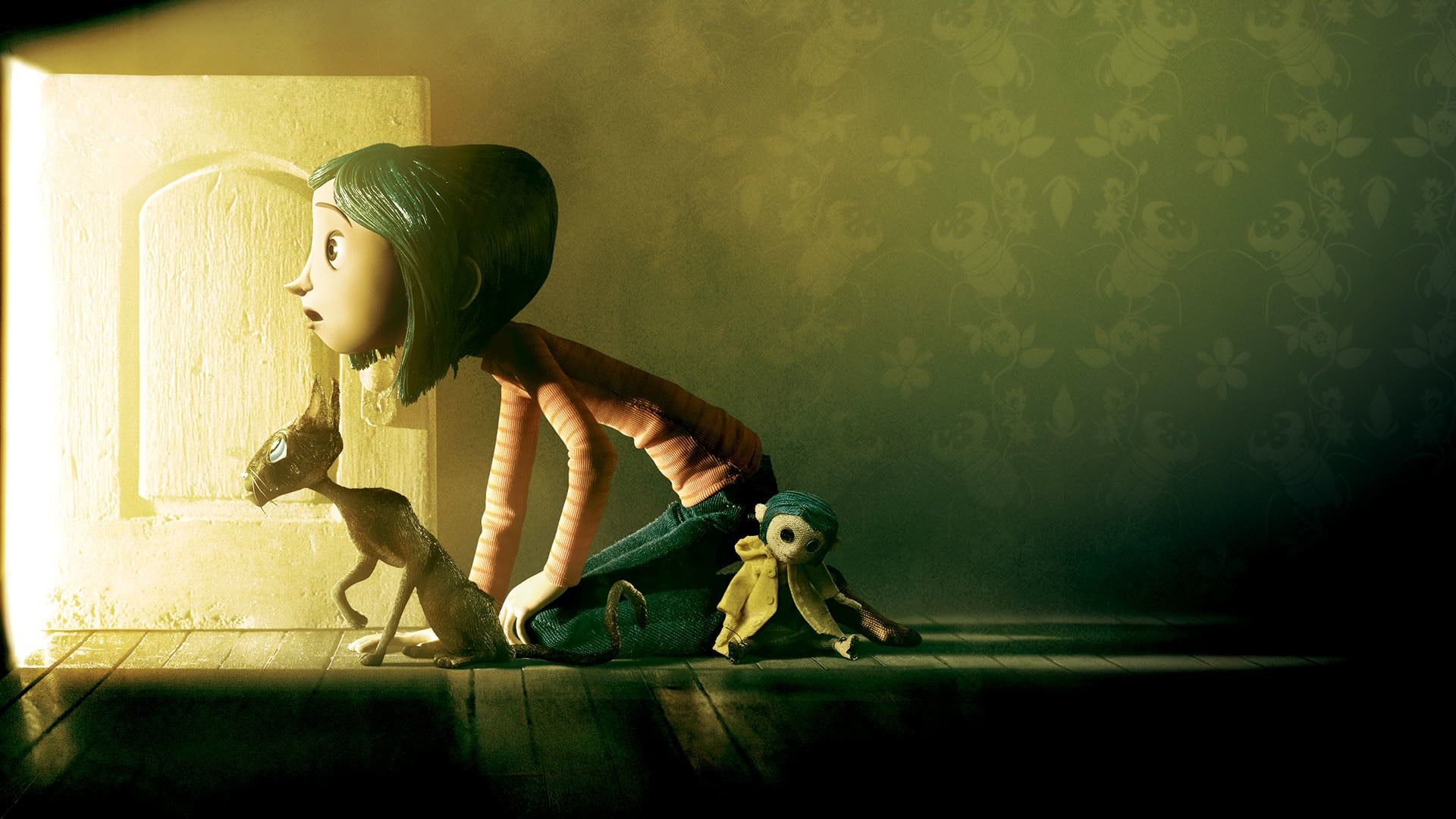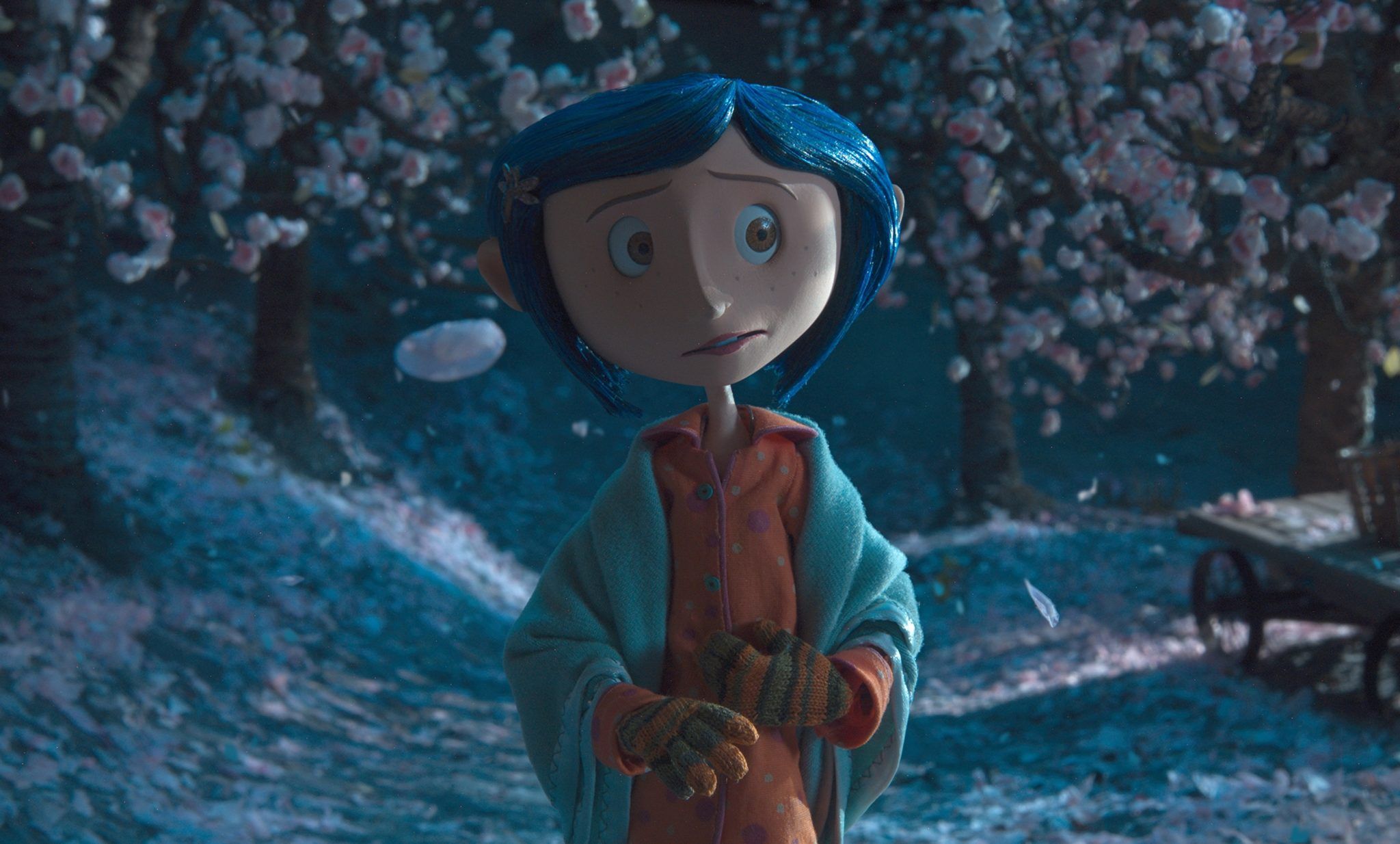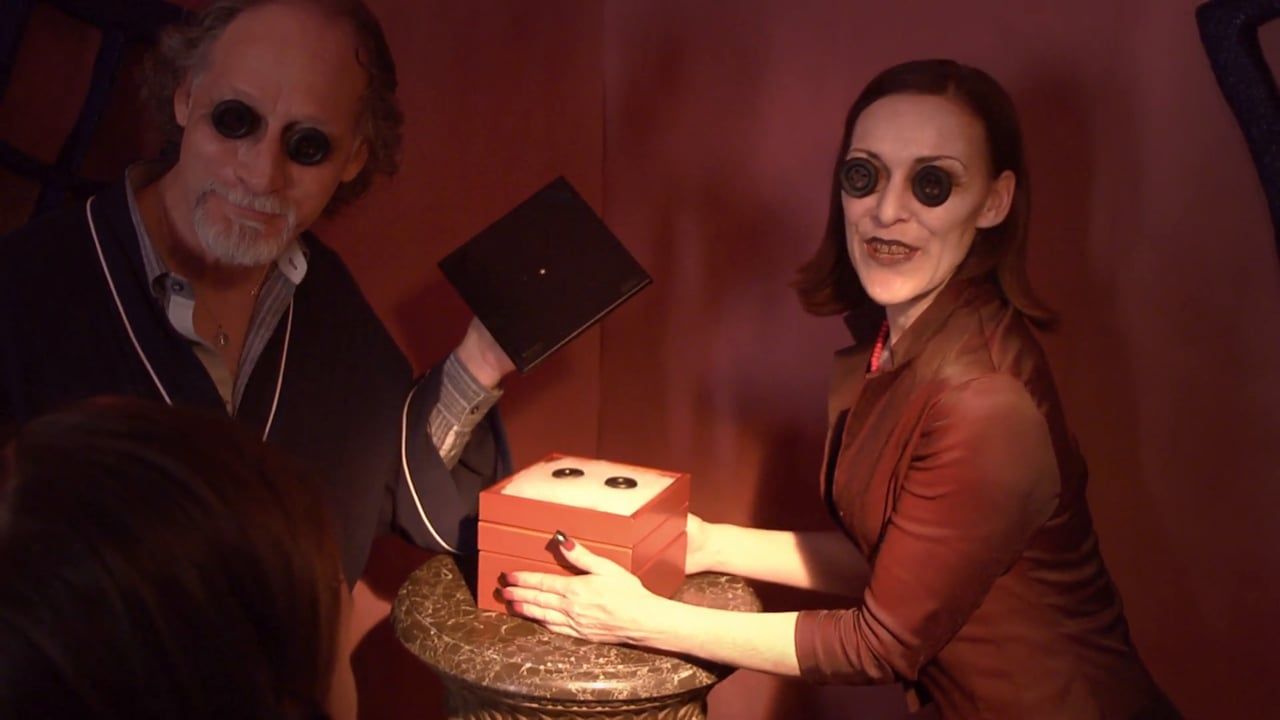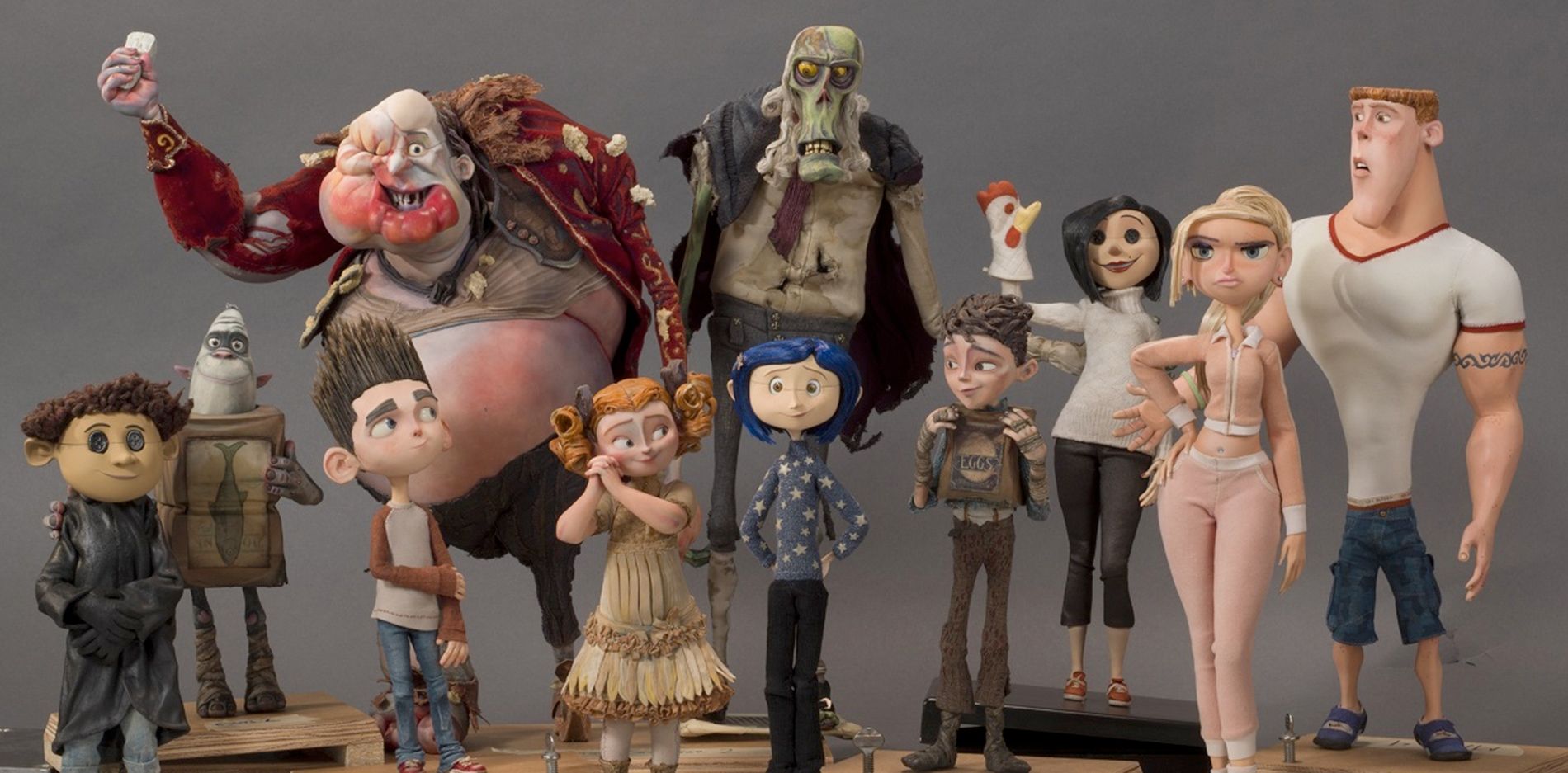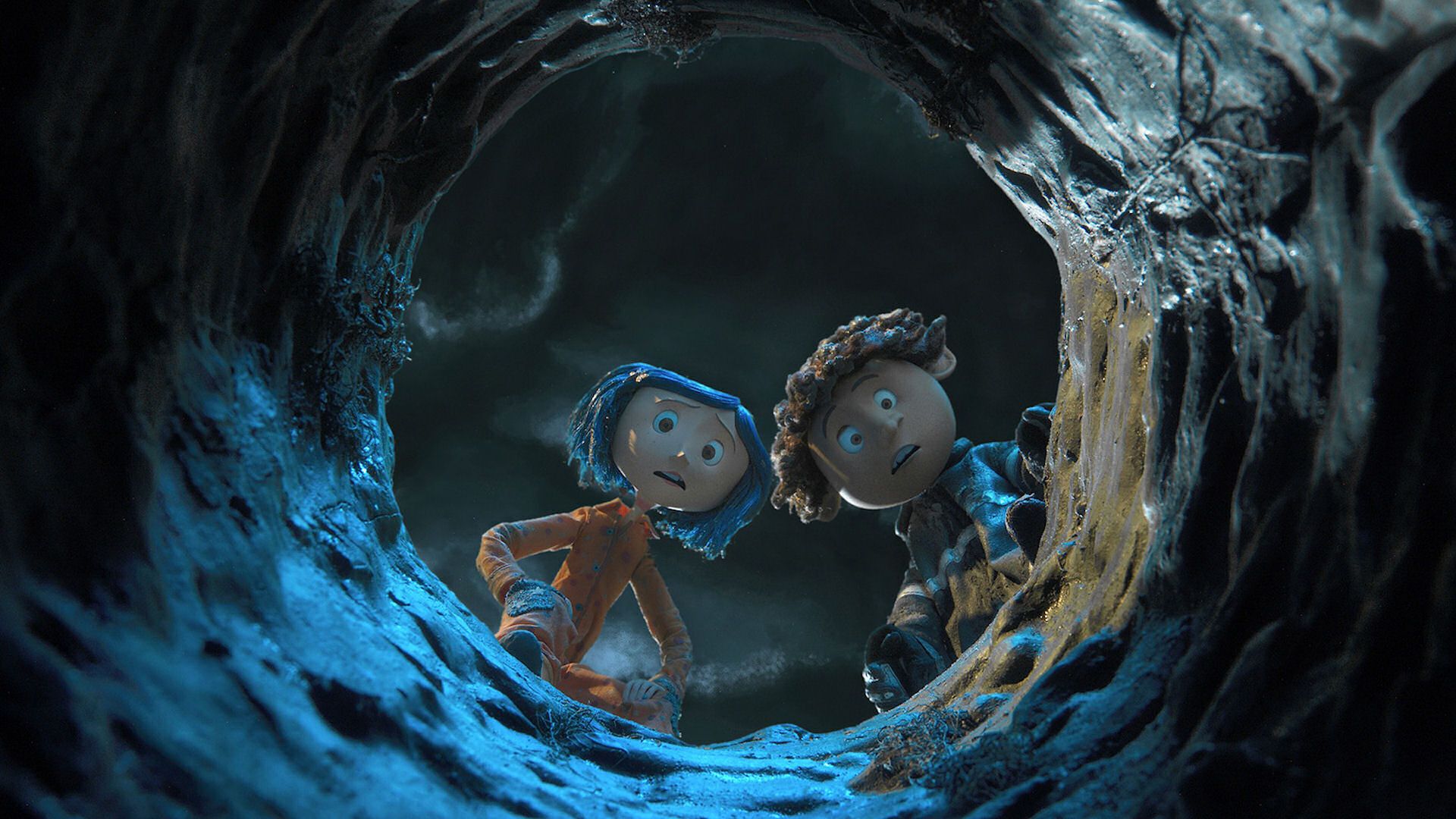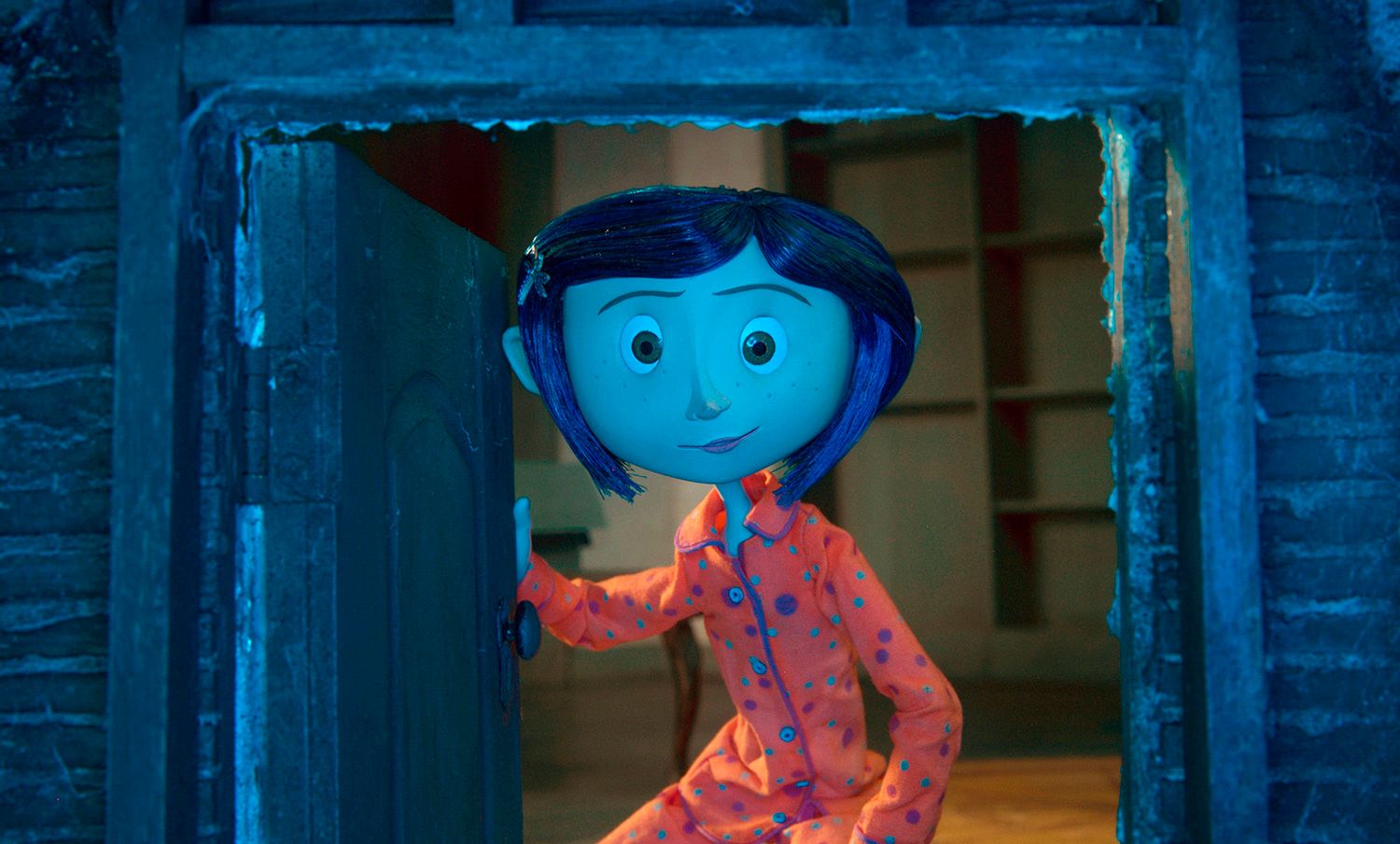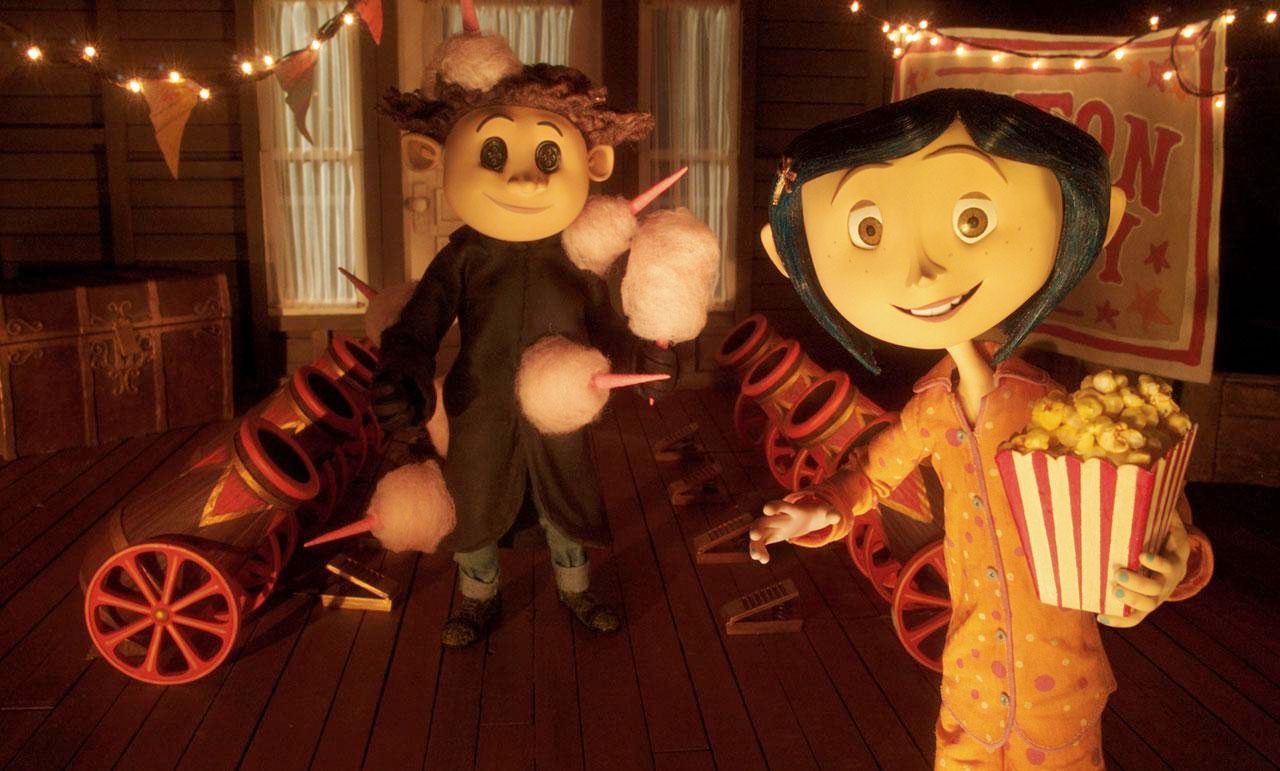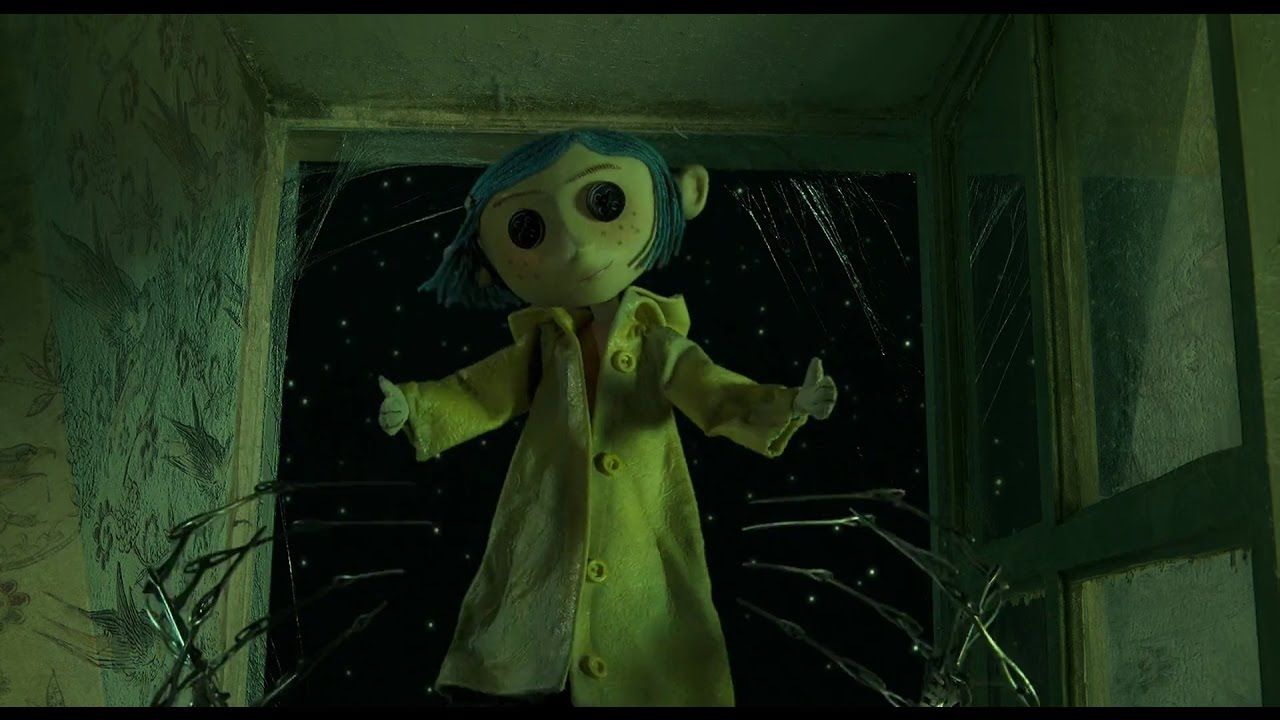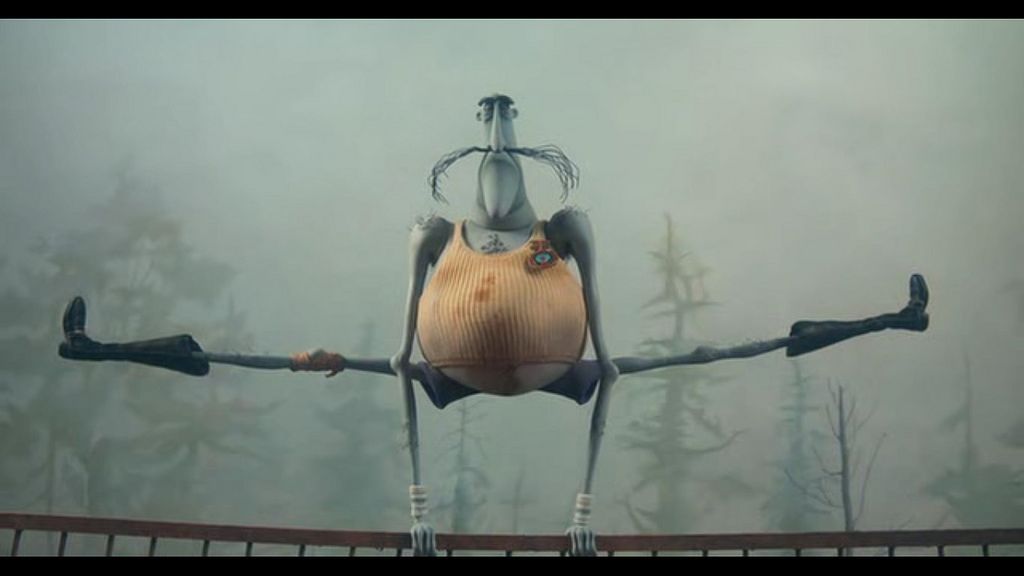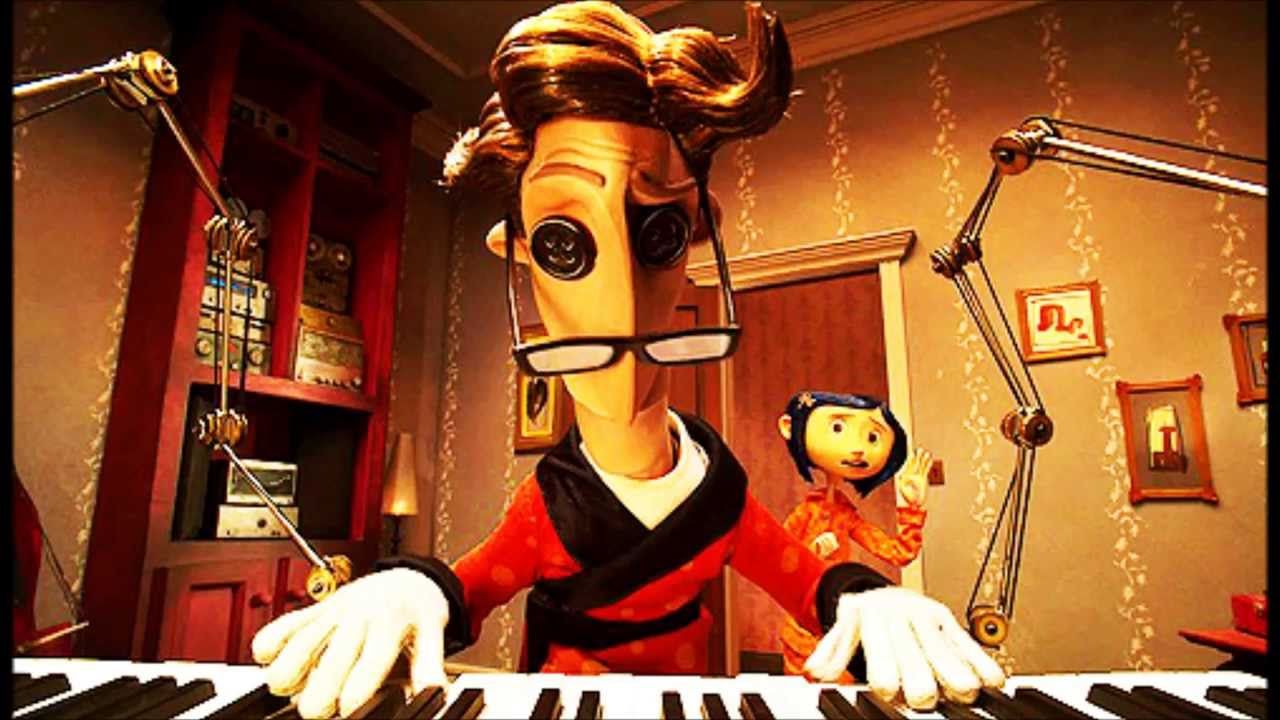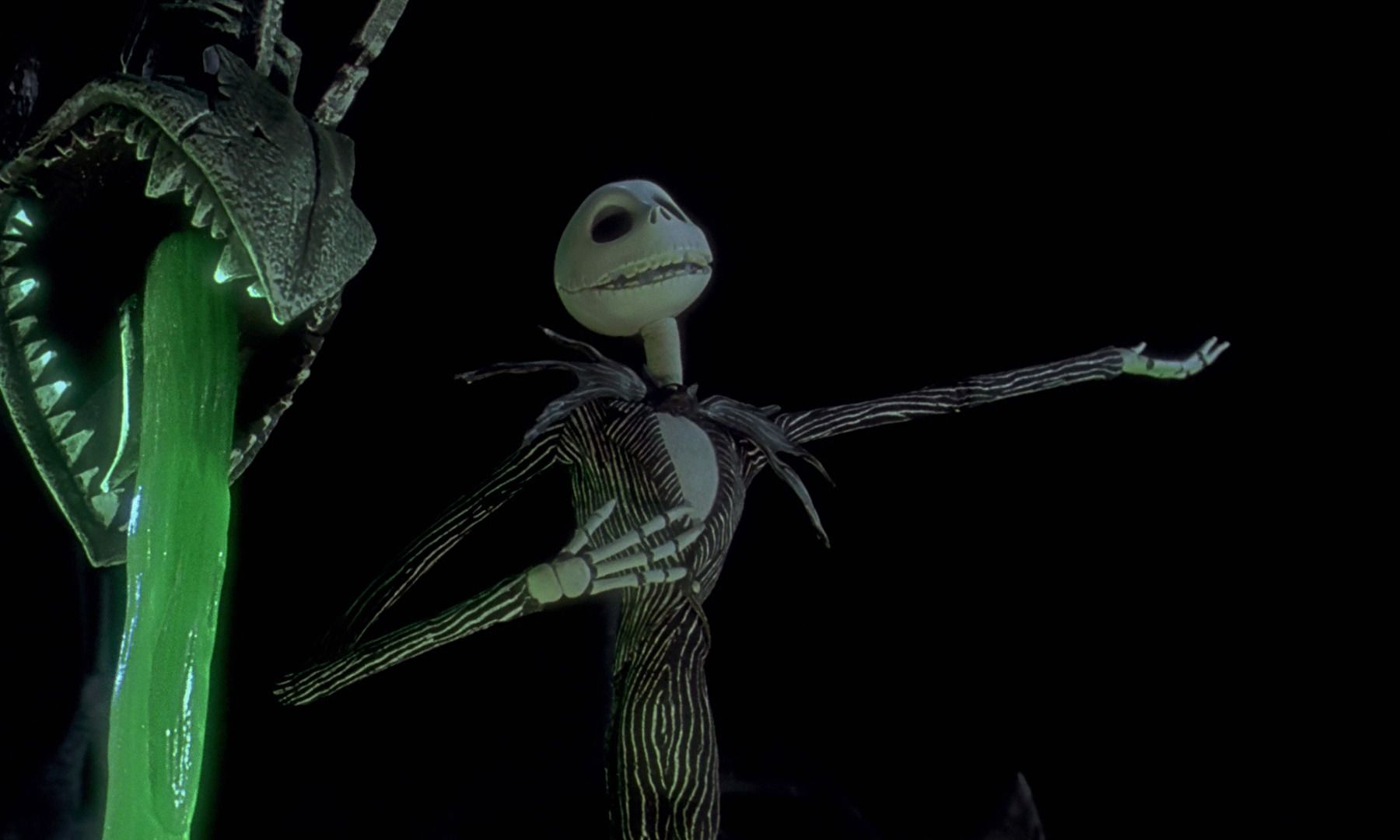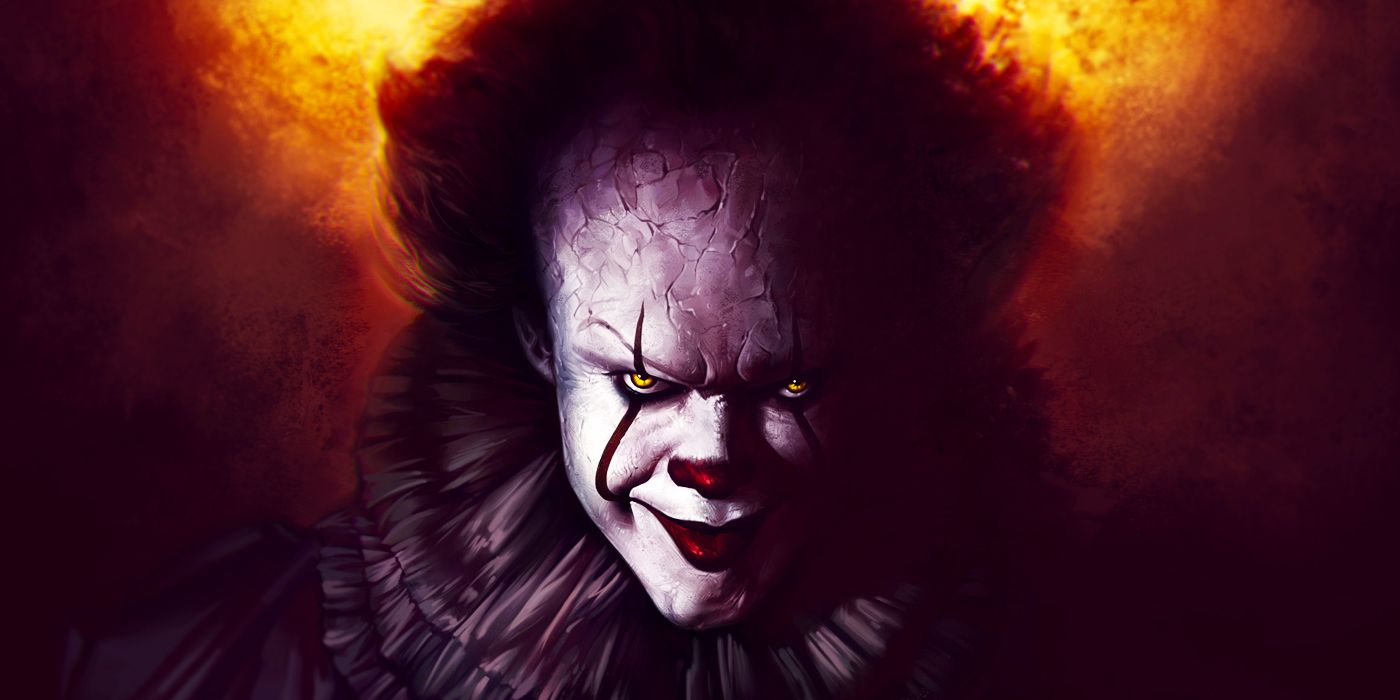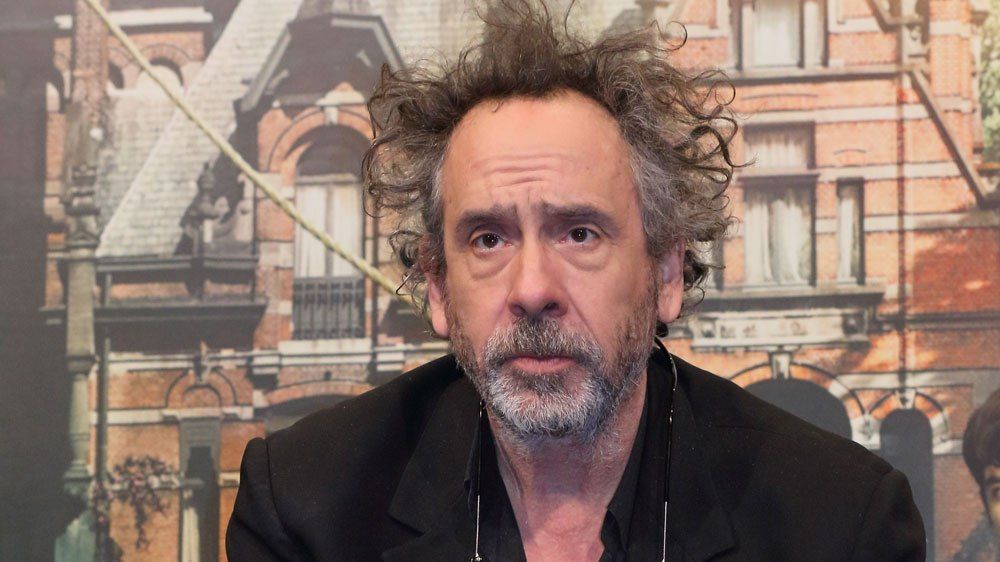Based on the 2002 novel by Neil Gaiman, Coraline was a wonderfully weird and creatively creepy dark fantasy feature. The film had a cast of colorful characters, a delightfully eerie atmosphere, genuinely scary moments, and a style of storytelling all its own. Both the book and the movie have enchanted and frightened hundreds of readers since they first appeared; in fact, they continue to be the favorite works of young horror aficionados, Neil Gaiman fans, and stop-motion fanatics. The story of a young girl venturing into a magical otherworld that's too good to be true is strangely familiar, but Coraline's adventures take a dark and at times disturbing twist into the realm of the uncanny. From page to screen, Coraline is an incredible feast for the eyes (buttoned or not).
Bringing such a strange and sinister tale to the big screen was no easy task. Gaiman's story was certainly not your everyday tale. A lot of decisions and designs were made that prominently altered the film we know today. Puppets were built, sets were altered, and pages of the script ended up in some writer's wastebasket. In the end, audiences received a mostly faithful adaptation of one of the most unsettling pieces of literature known to both kids and adults alike. Today, we're going to unlock the door into the Other World and explore what went into creating this monster-piece. We'll unravel the story, hear the compositions, and peek behind the puppet strings as we see what went into creating Coraline.
15 FROM THE PAGE TO THE SCREAM
It's hard to believe Coraline only warranted a PG rating. With scenes of pure horror and other intense content, we are still surprised this was directed at kids. The movie was a mostly faithful adaptation of the source, but some of its scenes weren't cut for time or constraints -- they were just too scary.
Two of the book's most memorable scenes were missing or changed due to their intensity. The first involved Coraline calling the police to report her parents' disappearance, enforcing her solitude. The second was a disturbing portrayal of the Other Father's "true form" as more vicious, monstrous, and misshapen. Scenes like this in their full visualization might be a bit too much terror for a kids' film.
14 ALMOST LIVE ACTION
Like many adaptations of literary work, at one time, the film was to have been a live-action feature with Dakota Fanning still in the lead role. At first, Henry Selick planned for it to be a dark kids' film along the lines of Hocus Pocus. However, with characters such as The Cat and Bobinsky's circus mice being difficult to make realistic, animation was clearly the way to go.
Similar to his adaptation of The Nightmare Before Christmas, Selick chose stop-motion animation to give the film its distinct look and feel. This brought Laika Entertainment into the picture, which gave us the film we know today. Interesting how one choice led to such a phenomenally individual film.
13 LEAVE IT TO LAIKA
Coraline was the first full feature made by Laika Entertainment. Though the Laika team had done work on other films, including Tim Burton's Corpse Bride, this was its first time ever venturing into a full feature film of its very own. Coraline was the blue-haired stepping stone upon which a studio was born.
After it smashed expectations with Coraline, Laika went on to be the powerhouse of stop-motion films. Coraline led to the creation of other films such as ParaNorman, The Box Trolls, and Kubo and the Two Strings. Lakia is still in the animated business, and it's all thanks to this strange story.
12 OTHER WORLDS
The film's design is responsible for a great portion of its storytelling. From the shape of the characters to the world around them, Coraline's use of color and character help bring the story off the screen. But the subtlety of the sets' designs is where the real cleverness lies.
The story takes place in two settings, reality and the Other World. The Real World set and characters are designed with flat shapes and dingy colors, making it a place one would want to escape from. The Otherworld set is a completely different animal, not only using brighter colors, but different angles and shapes to build the Other Mother's trap. With her blue hair and pastel tones, even Coraline's design is a combination of these two ideas.
11 WE'RE ALL MAD HERE, TOO
This one might not have slipped the true fans of the book and film, but many viewers and readers have compared Coraline to another literary heroine who finds another world. Think about this: a young girl follows a white animal down a mysterious portal into a fantasy world where she meets strange (even mad) characters and has an odd encounter with a talking cat. Does that ring any bells?
It's pretty clear how notes of Alice in Wonderland have flavored Coraline. From the strange tunnel to a more colorful world to the appearance of their respected vanishing felines, both pieces of fiction have strange and mystifying narratives children and adults adore. But a reimagined Wonderland is just the thing to expect from someone like Neil Gaiman.
10 A DIFFERENT DOOR
Hardcore fans of the source material will notice one ginormous change to a particular symbol in the book. The door through which Coraline discovers the Other World is drastically different in the film than it is from the book. The book's door takes a more Narnian approach -- a door that goes nowhere suddenly opens onto another room. But the film's door gives us a more dynamic experience.
The door in the movie is small and square like a crawlspace; an odd choice for a boarding house den, but not without purpose. Selick designed the door to create a more dreamy atmosphere and entrance to the Other World, even harkening back to Alice's rabbit hole. It was a critical choice, but one we can certainly appreciate.
9 WYBIE WHO?
Fans of the book were certainly surprised when this character made an unscheduled appearance. Wybie Lovat was a character created by Henry Selick who had no place in the book but serves as Coraline's friend in the film. It's not a bad character, mind you, just an unexpected one.
Wybie's character serves mainly two purposes. The first is to be the annoying comic-relief that rears its head in every dark-fantasy/horror film. The second is to prove to the audience that the Other World is not in Coraline's imagination. By introducing Wybie, his Grandmother, and their connections to the house, the Other Mother and her realm become grounded threats and a real danger. Who knew Wybie's character was so deep?
8 LIKE DOLLS' EYES
Though a great adaptation, the movie did take a few creative liberties. Some were a little out-there, like Wybie, and some were strokes of genius. One change the film made was the Other Mother's spying eye in the real world. In the book, it was the rats; in the film, we get the soulless eyes of the Coraline doll.
Not many of us like rats even at the best of times, but the doll was an incredibly smart choice. It ties the whole Other World together in that sort of theme. From the uber-eerie doll-making sequence in the opening to the literal doll-house version of the boarding house, it all boosts the creep factor deliciously. Weird, whimsical, or just plain unsettling, only the viewers can decide how it truly makes them feel.
7 A LONG TIME COMING
Taking a book from page to screen is no easy job. It took nearly seven years to even get the story ready for the film, let alone the actual movie-making process. With all the various sets, costumes, and puppets, Coraline took a grand total of 18 months to shoot.
Anything worth doing is worth doing right, they say. Stop-motion animation is one of the most time-consuming processes ever put to film, but the payoff is phenomenal. The process is what gives the film its distinct and, for lack of a better word, otherworldly style. It's all a perfect blend of artistic fantasy that brings these creatures and characters to life.
6 BIOHAZARD BOBINSKY
The Amazing Bobinsky, or Mr. B, is one of the most loveable characters in the film, but there is something certainly odd about him. His bright blue skin and eccentric demeanor certainly stand out. If a viewer pays attention, a bit of backstory is revealed through the medal Mr. B wears on his chest.
It resembles the same ones given to the participants of a very specific cleanup campaign; the 4A3C indicates the Chernobyl nuclear power plant and the three lines on the drop of blood represent the level of radiation. With his blue skin and curious quirks, he does certainly raise an eyebrow. Could the Russian rodent enthusiast possibly be a nuclear fallout survivor? Perhaps... or maybe he just looks good in blue!
5 MESSAGE IN THE MELODY
The Other Father is certainly charming, and definitely the most musical member of the other world, thanks mostly to John Linnell of They Might Be Giants providing his golden pipes and Coraline's Song. It's a marvelous performance, but we can't help notice something odd about the lyrics... and it's incredibly eerie.
What many first time viewers neglected to notice was the foreshadowing hidden in the lyric, "she's as cute as a button in the eyes of anyone who ever laid their eyes on Coraline." The Other Father is later revealed to be a puppet of the Other Mother; this could perhaps be his first attempt to save Coraline from the Beldam's clutches. It was certainly a clever move on Linnell's part.
4 WHO'S THIS?
Honestly, Selick's biggest selling point for the movie was the tagline "From the director of The Nightmare Before Christmas." It's an attention-getter to be sure, but what if something else from the Tim Burton classic made its way in? We don't mean it was hidden in an easter egg, we mean hidden in a literal egg.
Tim Burton may not have had anything to do with the film himself, but his most famous character certainly did. If one looks closely while the Other Mother cooks an omelet for Coraline, they can see the head of Jack Skellington himself appear in the egg yolk. This one was a clever wink at the fans from Mr. Selick for sure. After all, who doesn't like seeing the familiar grin of the Pumpkin King?
3 THEY ALL FLOAT DOWN HERE
Theories are often a fanbase's way of making their own connections with the implications of a film/book/game. Most are pretty far-fetched, but on rare occasions, there are those theories that are not only interesting but plausible. There is one such theory about the Beldam/Other Mother tied to another spidery child-eater.
With the recent remake of Stephen King's It, there has been speculation that Pennywise and the Beldam are the same creature. Both of them lure children to their doom with friendly facades, inhabit other dimensions, and have a giant spider-like true form. Could the creepy clown also reside in the Pink Palace? It's certainly an interesting and entertaining notion.
2 WHO INSPIRED THE STORY?
It's strange how art can imitate real life, isn't it? When asked about the origins of Coraline, Neil Gaiman has cited that his daughter, Holly, would ask him to write out stories she made up as a child. These stories would often be about her mother being replaced by a witch and how she escaped said peril. What began as a 2000-word short story for his daughter evolved into a Newberry Award-winning novel.
This fact is not only fascinating but relatable to anyone who has ever been an imaginative child. We've all fallen into a fictional land to set our minds free at some point in our lives. Gaiman said it best, "[Fiction] can be a way of showing you that the world that you live in is not the only world."
1 NOT TIM BURTON
When pitching the adaptation of the book, Gaiman said he only had two people in mind, Tim Burton and Henry Selick. Of course, the film was made by Nightmare Before Christmas director, Henry Selick, to much success. But for some bizarre reason, fans mistakenly give Tim Burton the credit.
Perhaps it's the weird and whimsical style of the film, the use of colors and shades, or maybe the creepy stop-motion puppets that keep tying the famous director to the project, but there is no ounce of Burton on the material. That being said, it does look and sound like something he would create. We can only hope he picks up one of Gaiman's other works sometime in the future.

